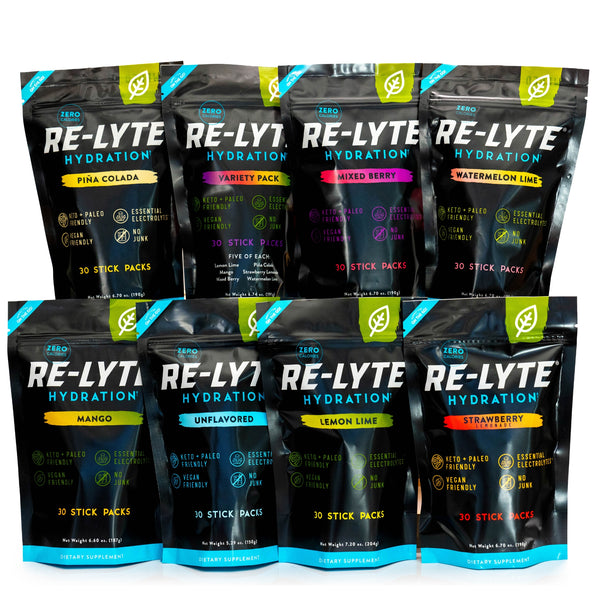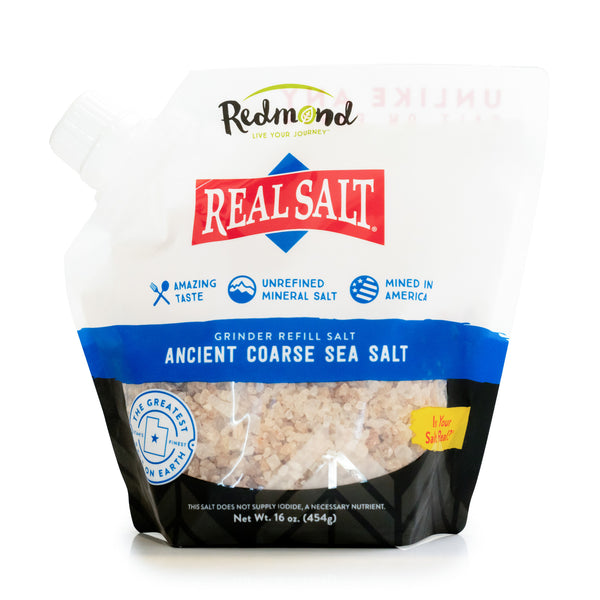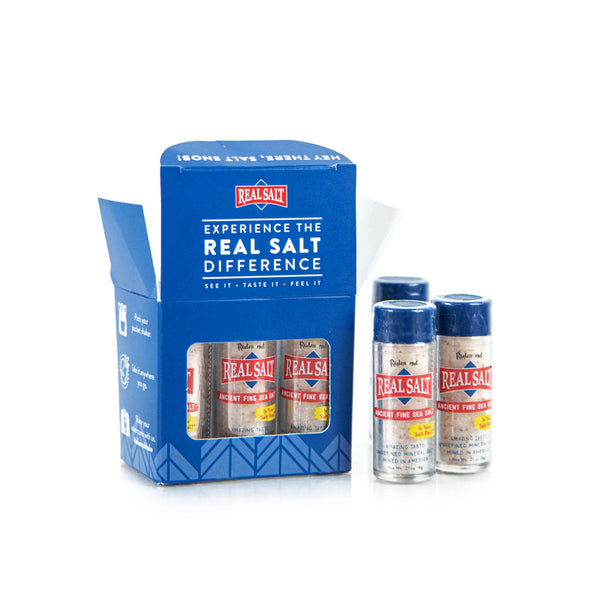What Is the Ideal Electrolyte Balance for Exercise Recovery?

Article at a Glance:
- Rest and rehydration are keys to successful recovery from exercise.
- There are five primary electrolytes (sodium, calcium, magnesium, chloride, and potassium), and sodium is the one you lose most when you sweat.
- Most electrolyte products don't contain enough sodium to replenish sodium reserves for serious exercisers.
- Re-Lyte Hydration has an ideal micronutrient blend that includes 810 mg of sodium.
You take exercise seriously. The nearest CrossFit gym is like your version of the Cheers bar. You wake up at dawn every morning to train for a marathon (even the mornings when it’s cold and wet and your dog is cuddling with you under the blanket). You spend hours a day perfecting Lotus Pose, King Pigeon Pose, Peacock Pose, and all the other poses that make you look more like a Stretch Armstrong doll than a human.
Fitness enthusiast, exercise junkie, athlete— whatever you call yourself, your body has different needs than the occasional power walker, the person who drops in for a hatha yoga class from time to time, or the person who does a 30 minute YouTube exercise video a few times per week.
For you, exercise is a way of life. And if you want to keep living the active life you love and achieve your fitness goals, you have to pay extra special attention to something that’s easy to overlook when you’re caught up in that healthy living high— recovery. If you don’t give your body what it needs to recover from your workouts, you’re not going to be able to continue performing at your best. That includes rest and relaxation, but it also includes another “r” word— rehydration.
When you sweat, you lose water and electrolytes at a rapid pace. The thrice-a-week YouTube video exerciser doesn’t need to worry about this much. As long as they drink some water after each workout, they should be fine. But if you’re engaging in serious, sweaty exercise sessions daily (or close to it), you need to take rehydration to the next level. That means drinking lots of water AND purposefully replenishing electrolytes. Here’s what you need to know to rehydrate right…
Understanding the Connection Between Electrolytes and Exercise
Electrolytes are minerals that turn into positively or negatively charged ions once dissolved in water. These electrically-charged minerals take on some pretty important tasks. They balance the amount of water in your body. They maintain your body’s acid-alkaline balance. They deliver nutrients to your cells, and transport wastes out of your cells. And they regulate your nerve, muscle, heart, and brain function.
There are five primary electrolytes (chloride, potassium, calcium, sodium, and magnesium), and they all have different jobs in your body:
- Chloride helps your cells maintain the proper balance of fluid.
- Potassium helps regulate your heartbeat, muscle contraction, and nerve impulse conduction.
- Sodium helps keep your bodily fluids in balance.
- Calcium and magnesium play a role in muscle contraction, including the contraction of the heart muscle.
All five electrolytes need to be replenished regularly. But when it comes to exercise recovery, there’s one that should receive most of your attention: sodium.
Sodium is the electrolyte you lose most in sweat. The average person loses about one gram of sodium per liter of sweat (although, that number can range anywhere from 0.2 grams per liter of sweat to 12.5 grams per liter of sweat). For most people, that’s about one gram of sodium lost per hour of exercise. You also lose a lot of chloride in your sweat, and small amounts of potassium, magnesium, and calcium.
Now, the average Joe exerciser can usually replace the sodium he loses during workouts through diet. But people who take a more ambitious approach to exercise typically aren’t refilling their electrolyte reserves enough— even if they add those colorful, electrolyte sports drinks to the mix.
A 2015 study published in the Scandinavian Journal of Medicine & Science in Sports found that triathlon racers who took salt tablets and drank sports drinks replaced about 71 percent of the sodium they lost by sweating. Triathlon racers who drank sports drinks but didn’t take salt tablets only replaced about 20 percent of the sodium they lost through sweat. Guess what else? The people who took salt finished the race 26 minutes faster.
You’re Unique… and So Is Your Electrolyte Loss
Your ideal amount of post-workout electrolytes depends on how much electrolytes you lose during your workout. And the truth is, there are sooooo many factors that influence how much electrolytes you lose when you exercise….mainly because there are sooooo many factors that influence how much you sweat.
Some people naturally sweat more than others. Larger people tend to sweat more than smaller people, for example. Age, gender, and diet can influence how much you sweat too. Men tend to sweat more than women. And older people tend to sweat less than younger people. There are also genetic factors at play. Some people are just naturally sweaty. Period.
Then there are those factors that’ll make anyone a little extra sweaty— exercising in hot or humid weather, doing high-intensity workouts, exercising for longer than 60 to 90 minutes, wearing exercise clothes that are too heavy or non-breathable.
With all these individual factors at play, it’s hard to issue a blanket statement saying everyone needs to replenish with this many electrolytes after working out. That said, we’ve spoken to endurance, keto, and fitness experts who’ve helped us nail down an electrolyte formula that will deliver enough electrolytes to the most serious exercisers.
What the Experts and Research Say About Electrolyte Balance for Exercise Recovery
Health and exercise experts seem to agree on one thing: Most electrolyte products don’t contain enough sodium to replenish sodium reserves for serious exercisers. Remember the study we mentioned before? People participating in triathlons who drank electrolyte drinks and used salt tablets still didn’t replace all the sodium they lost.
That’s why we created Re-Lyte Hydration. It has an ideal micro blend developed by experts and backed by the latest research. It contains two times more sodium than most other electrolyte products, along with an optimized blend of other electrolytes. Here’s the exact electrolyte ratio you’ll get in a serving:
- 810 mg of sodium
- 400 mg of potassium
- 1,280 mg of chloride
- 60 mg of calcium
- 50 mg of magnesium
- 80 mg of coconut water powder
- 60+ trace minerals
Now, Re-Lyte Hydration contains more sodium than other electrolyte products but it contains far less other ingredients— additives, artificial flavors, artificial colors, GMOs, you know, all icky stuff you’d rather avoid.
It also comes in flavored and unflavored varieties. Unflavored Re-Lyte isn’t sweet at all (it falls more on the very, very salty end of the spectrum) and contains zero calories. The flavored varieties are lightly sweetened with stevia and also contain zero calories.
So, whether you’re trying to keep your electrolyte reserves strong during hot yoga, before you run a big marathon, in-between CrossFit workouts, or whatever other intense fitness fun you have penciled in, give Re-Lyte Hydration a try. It’s the perfect option for anyone who wants to rehydrate as seriously as they exercise.
Comments (14)

Hi, is this pregnancy safe ?
———
Redmond Life replied:
Thanks for your question, Yvette! Re-Lyte Hydration is generally well-tolerated, but it’s always a great idea to check with your healthcare provider before taking any supplement. You might also find this blog about Electrolytes while pregnant helpful: https://redmond.life/blogs/live-your-journey/how-to-stay-perfectly-hydrated-when-you-re-pregnant-or-nursing [http://redmond.life/cdn/shop/articles/1_4_f29ed702-8f54-4ed9-a0fc-d8f620470f0e_1200x1200.jpg?v=1691184997]<https://redmond.life/blogs/live-your-journey/how-to-stay-perfectly-hydrated-when-you-re-pregnant-or-nursing> How Much Water and Electrolytes Do You Need When You’re Pregnant or Nu – Redmond Life<https://redmond.life/blogs/live-your-journey/how-to-stay-perfectly-hydrated-when-you-re-pregnant-or-nursing> Article at a Glance: When you’re pregnant, your total water intake should be between 12-13 cups per day. Since you’re increasing your water intake, you may need to increase your intake of certain electrolytes when pregnant as well. Since breastmilk is 90 percent water, breastfeeding women need to increase their total w redmond.life

Im 70. I live in Palm Desert ca, its desert heat. i coach football i sweat profusely. i have been taking relyte in the am. i practice at 6-8 pm. is there a better time to take it and can you take more than one serving daily
———
Redmond Life replied:
Hi Bill! Thanks for your question. How much Re-Lyte to take depends on each individual, their body, and their climate. Hydration any time of day is a good idea, but before exercising in the heat, Dr. James D. recommends pre-hydrating 60 minutes before. You can read more about exercising- in the heat here: https://redmond.life/blogs/live-your-journey/feeling-the-heat-dr-james-dinicolantonio-explains-how-to-exercise-safely-in-hot-temperatures You can read more about how much Re-Lyte is right for you here: https://kb.redmond.life/how-much-re-lyte-hydration-is-too-much Hope this helps!

I am enjoying your Salty Palmer flavor the most. I suffer from hyponatremia and I am currently on the road to recovery by drinking about two 16 ounce bottles of water mixed with Salty Palmer. I am slowly bringing my sodium level up from a low of 127 to now 135. Normal sodium is 136-145. I will probably get your variety pack to experiment with offer flavors; because I fear this disease will be a life long fight; and at 70 years young I have a few years left, I hope. Thx
———
Redmond Life replied:
Hi Terrell! Thanks so much for sharing your story. While we don’t make any claim that our products treat, cure, or prevent any disease, we love hearing that you are loving our products. We wish you all the best!

WHAT is the mix ratio - 1 packet to 16oz 20oz 24oz????
———
Redmond Life replied:
Hi Susan! Re-Lyte mixes one scoop in 16-18 oz of water. You can always add a bit more or less, depending on your taste. Thanks for the question!















